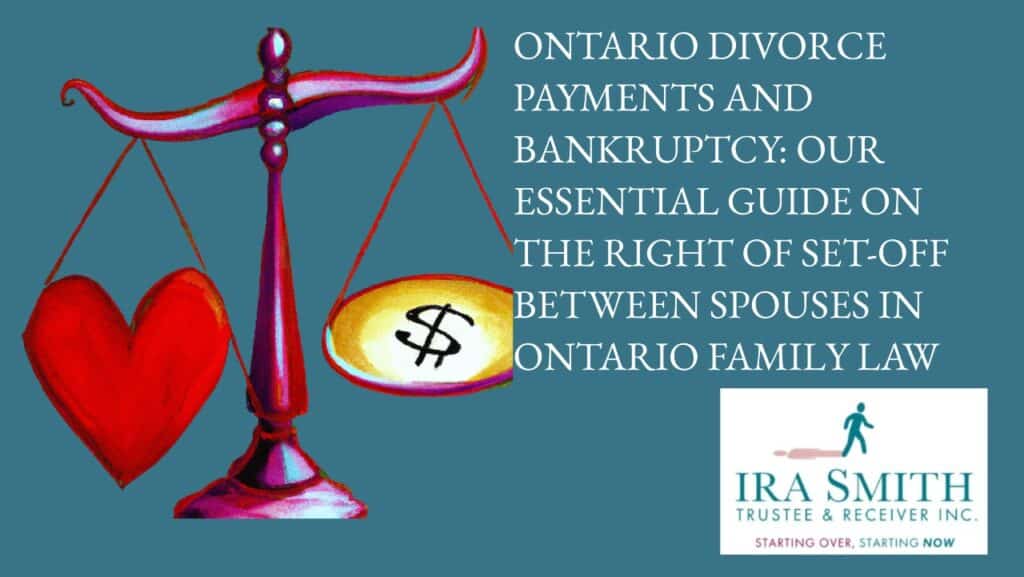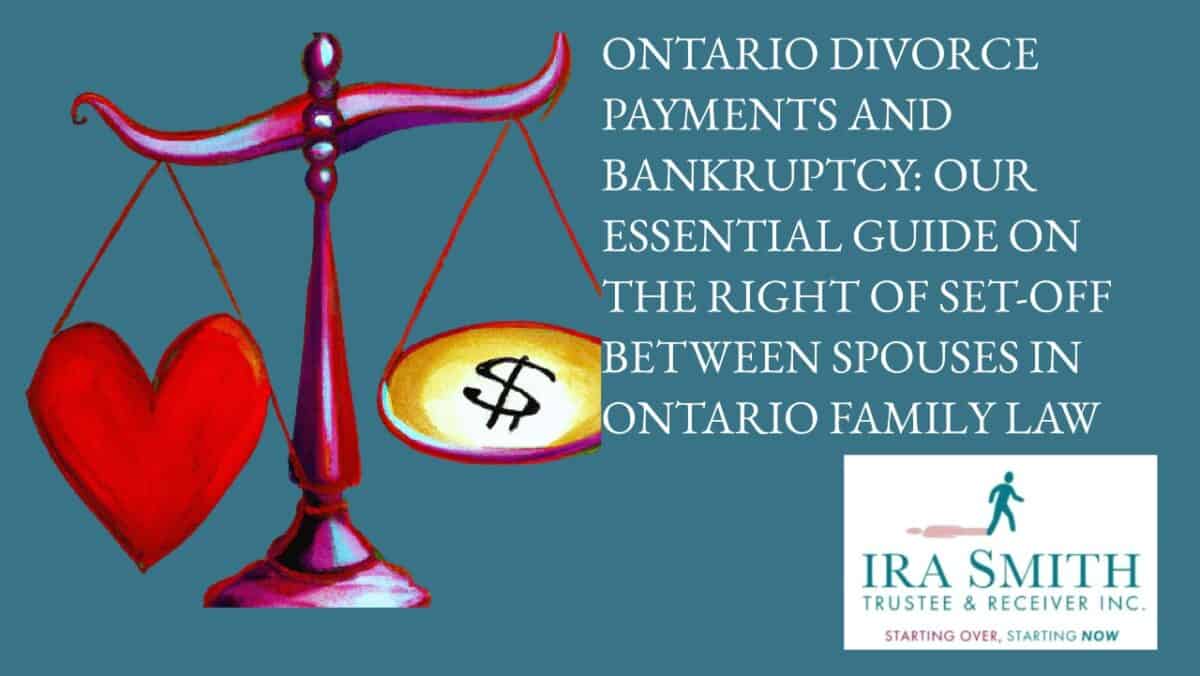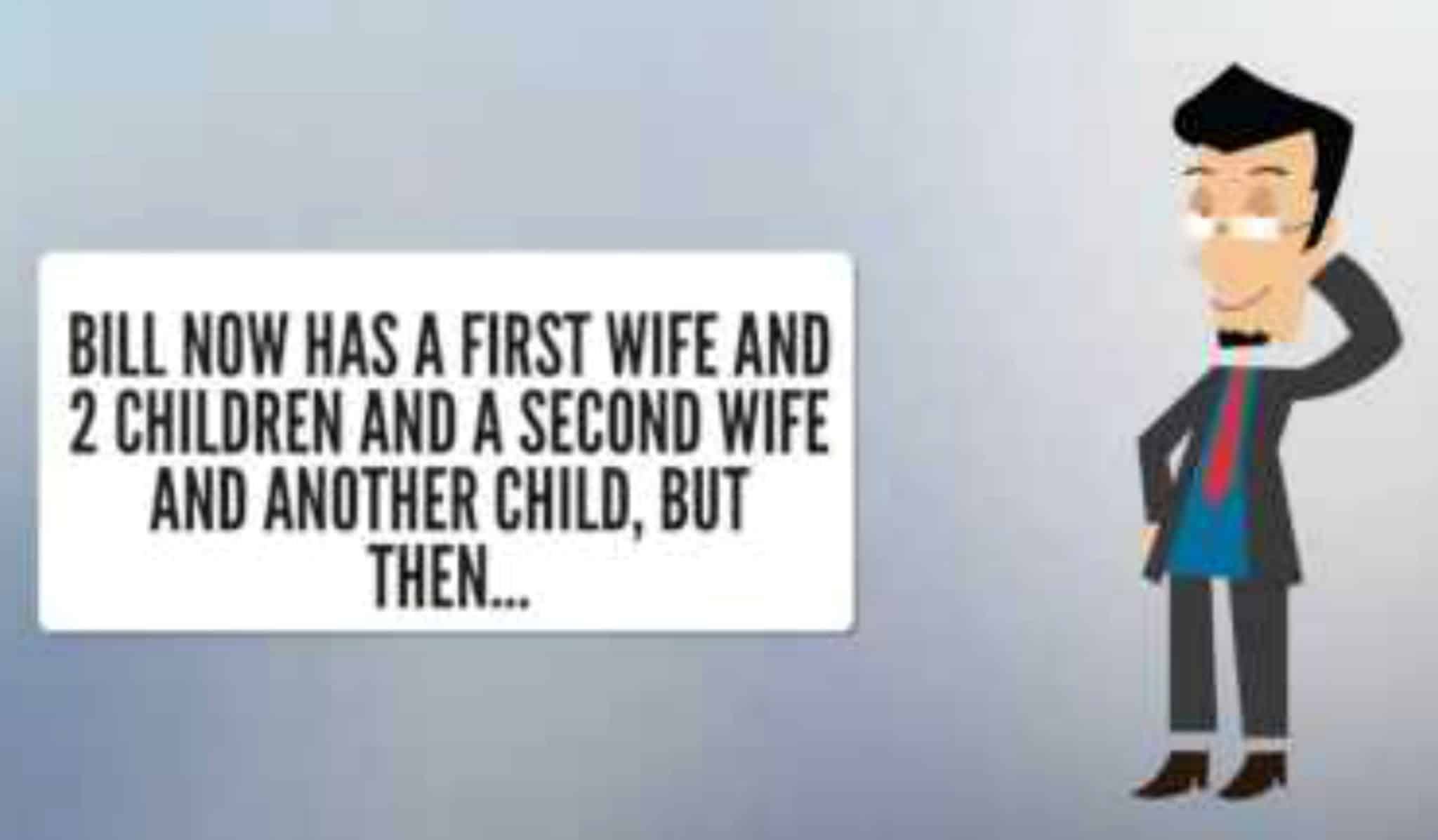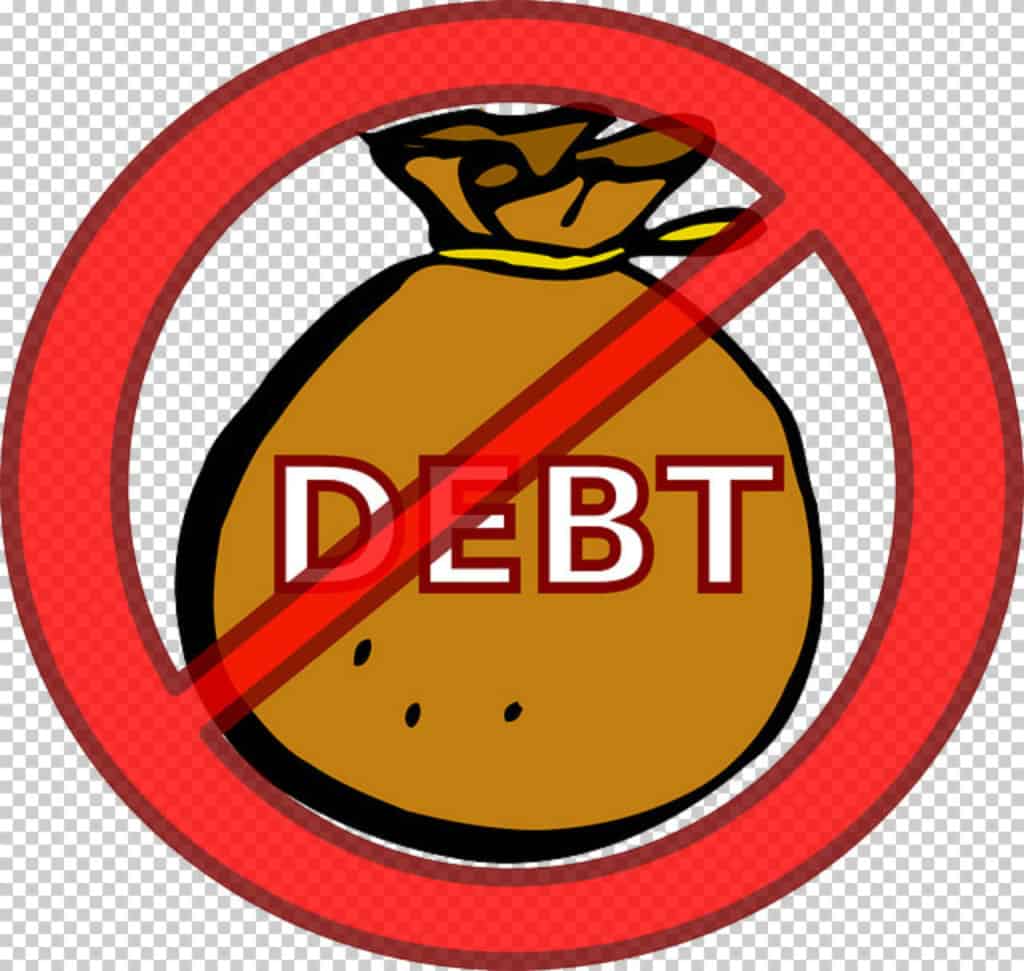Introduction
Navigating the choppy waters of divorce is never easy. Apart from the emotional toll, there are intricate financial aspects that demand attention. One such aspect is the right of set-off between spouses, a concept that commonly surfaces in law, including the world of Ontario family law.
This Brandon’s Blog aims to shed light on the subtleties of the interplay between Ontario divorce settlements, equalization, spousal support obligations, child support, the right of set-off and bankruptcy. I explain and also explore a recent decision by the Ontario court that sheds light on the ins and outs around the payments to be made by the husband which the court allowed to be set off against court costs owed to him by his bankrupt wife.
Understanding Divorce Payments and Bankruptcy
The Ontario divorce process requires a huge selection of factors to consider, from equalization to support payments. Spouses find themselves not only unravelling the emotional strings but also coming to grips with the monetary details that bind them. When separation links up with bankruptcy, issues can end up being a lot more convoluted.
As a general policy, the Bankruptcy and Insolvency Act (Canada) (“BIA”) does not interfere with or generally influence spousal support or child support payments payable by one spouse to another, yet it does influence equalization. As described in the case below though, when you bring the concept of set-off rights into the mix, with or without a bankruptcy, support payments can be affected. Even in the case I describe below, the bankruptcy implications on support payments were not the reason for the impact of the court’s decision on it. It was the effect of the right of set-off.
The Right of Set-Off Explained
The right of set-off is a legal concept involving the negotiation of debts between two parties. Basically, it’s a mechanism that permits 2 people to offset common financial debts owed to each other, simplifying the cash element of the economic transaction. The right of set-off can play a role in Ontario family law cases also. It can help to simplify the tangled web of financial responsibilities that typically arise throughout divorce.
There are 2 types of set-off claims: (i) equitable set-off; and (ii) legal set-off. Equitable set-off hinges on fairness and equity, enabling one party to offset what they owe to the other based on what that other party owes to them. Legal set-off, also called statutory set-off, is backed by particular laws, supplying a structure for countering financial obligations. Both kinds of set-off are targeted at fostering equity as well as fairness during legal proceedings, including the divorce process.
Let’s dive deeper into the variables affecting the right of set-off as well as how it pertains to support payments and equalization claims.
Factors Influencing the Right of Set-Off
In the complicated landscape of divorce, not all debts are equal. The right of set-off includes different types of financial debts which can affect financial support and equalization payments. However, it’s necessary to acknowledge that not every financial responsibility can be subject to set-off. Understanding which financial obligations fall under the umbrella of set-off is vital.
Pre-existing agreements as well as court orders speak for themselves and have considerable weight if not the final word when it comes to set-off. If there are prior agreements or court orders pertaining to financial matters, these drive the applicability of set-off.
Additionally, in Ontario divorce proceedings, the financial interdependencies between spouses will be of the utmost importance. In cases where one spouse is owed support amounts while simultaneously owing a different financial debt to the other, the right of set-off can supply a system for balancing the financial scale, as we will see below. Parties can voluntarily enter into a set-off agreement in divorce.
Set-Off and Support Payments
Support amounts are where the right of set-off can enter. However, it is very important to note that not all amounts may be eligible for set-off. Lawful guidelines, especially in light of what is fair and equitable, and the unique situation of each case will influence whether set-off applies or not.
You will certainly see this play out in S. v. A., 2023 ONSC 4719 (CanLll) described below. Consulting an Ontario divorce lawyer can offer the necessary assistance to establish the applicability of set-off in your particular situation.
Set-Off and Equalization
The division of assets and debts during separation and divorce and property ownership issues in Ontario are dealt with through the process called equalization. This is how property division in divorce in Ontario is handled. This process aims to ensure that each spouse receives an equitable portion of the family property, irrespective of who earned or acquired it during the marriage.
The equalization payment, which is calculated by deducting the value of one spouse’s net family property from the other spouse’s on the date of separation, is generally paid by the spouse with the higher net family property to the spouse with the lower net family property. Equalization is a significant aspect of family law proceedings in Ontario, serving to provide financial stability and impartiality for both parties involved.
Think about a situation where a married couple jointly owns assets and the partner with the reduced net family property owes the other spouse money under either an agreement or court order (legal set-off). In such situations, the amount payable by the spouse with the greater amount can be countered against the debt owed to him or her by the other spouse to ensure a reasonable computation of the equalization claim. This enables a more just outcome, in what is otherwise a complicated process. This can also decrease the number of times they need to exchange cash.
The recent decision of the Ontario Superior Court of Justice in the case of S. v. A., 2023 ONSC 4719 (CanLll) described below, demonstrates how, based on those facts, the relationship between the bankruptcy estate, divorce, equalization, spousal and child support and also set-off can considerably influence the financial outcome of the divorce process. It’s critical to approach this element with a full understanding of the complexities involved. Getting legal advice from Ontario divorce legal counsel to help you navigate your divorce payment obligations and the right of set-off will help protect your financial interests.
Bankruptcy and divorce: Bankruptcy’s Impact on the Right of Set-Off
Clearly, there are enough legal complexities in divorce without layering on the federal bankruptcy law that largely does not interfere with provincial laws on divorce. Filing bankruptcy deals with the elimination of debt giving the person a fresh start. According to the BIA’s Section 97(3), the right of set-off applies to all claims against the estate and any lawsuits started or continued by the licensed insolvency trustee (formerly called a bankruptcy trustee). But there are a few exceptions like fraudulent preference or transfer under value proceedings.
When you get a divorce and you’re dealing with bankruptcy proceedings, things can get complicated. An area that always presents conflict in divorce proceedings coupled with when one of the spouses files for bankruptcy, is the area of joint debts.
Just because you’re getting divorced it doesn’t mean you don’t have to pay off any debts you took out together. You need to make sure you have a separate agreement for that, which can be very tough to negotiate and may end up not being fair to the spouse who is not insolvent. They may have to look to another aspect of their family law proceedings, legal separation agreement or their divorce agreement to get a measure of fairness back.
It’s a lot to handle when you’re going through a divorce. You definitely need to talk to an Ontario family law lawyer. And if you or your spouse need to file for a BIA insolvency process, such as a consumer proposal or personal bankruptcy, it might be worth it to get a bankruptcy lawyer too. Better safe than sorry especially when dealing with how bankruptcy can affect a divorce proceeding.
Recent Developments and Case Precedents
Ontario family law isn’t set in stone; it’s always changing. You have to stay up on the most up-to-date laws and court decisions to make sure you understand how the existing application works. Adjustments in laws and vital court decisions can have a large effect on how the right of set-off is interpreted and made use of.
Recent cases give us a sneak peek right into just how spouses can actually use the right of set-off in the real world. By looking at the recent decision which I will now describe, you can get a better grasp on exactly how it works. This case is an example we can learn from, showing us exactly how the courts deal with the right of set-off in a family law circumstance. So here we go!
S. v. A., 2023 ONSC 4719 (CanLll)
Factual background
Mr. S was owed about $729,000 (including interest) by Ms. A for court costs, but she hadn’t made any voluntary payments except for a small garnishment. Mr. S tried to have her bankruptcy annulled because he thought it was a misuse of the Canadian bankruptcy system. He wasn’t successful in that application.
Ms. A was entitled to 50% of the net sale proceeds and an extra $285,000 (which includes $75,000 in child support, $20,000 towards the childrens’ expenses (prior to their beginning to live with Mr. A.), and $115,000 equalization).
Full disclosure
Ms. A. consulted with us prior to her moving out of the matrimonial home and filing for bankruptcy. Of the many things we advised her of in our initial no-cost assessment, the most pertinent to this legal case were:
- given the potential for the right of set-off being applied and section 178(1)(a) of the BIA, bankruptcy may not help her at all in avoiding the court costs order against her in the divorce proceedings; and
- the sale price of the jointly-owned matrimonial home will be maximized if she cooperates with her husband and they sell the home together rather than her trustee in bankruptcy being a co-vendor.
She obviously did not like our advice as she told us that she did not wish to cooperate with her husband in the sale of the home and expressed frustration when we told her that bankruptcy may not help her achieve everything she wanted to. Nevertheless, she went ahead and filed for bankruptcy with a different licensed insolvency trustee. It turns out that the court agreed with our assessment of the situation!
Overview and decision
This is one of the many Ontario court decisions on set-off. In this case, it turns out that Ms. A was not acting in good faith during the five years after her split with Mr. S. The court decided to take the costs order against her of $677,610 plus additional costs and penalty of $47,000 she owes to Mr. S. and set-it off against some of what he had to pay in spousal support and equalization payments he owed her.
Ms. A. then filed an assignment in bankruptcy, mistakenly thinking that this would relieve her of this and other debts. As the jointly owned family home had not yet been sold, Mr. S and the Trustee worked together to sell the house. Ms. A. didn’t pay the property taxes or the mortgage for quite some time and those amounts owed had to be paid in order to complete the sale of the home.
Mr. S. was in divorce debt to Ms. A. and she owed him money for court-ordered costs against her arising from the same thing, being the divorce proceedings. The court ordered that Mr. A. could use set-off relief. The court granted this relief as it was fair. This is exactly how equitable set-off works.
Practical Tips and Recommendations
If you’re going through a divorce and dealing with financial problems too, here are some real-life tips to keep in mind:
- Write everything down: Keep track of all your cash flow, support payments, and agreements. Trust me, when stuff hits the fan, you’ll be glad you have it all documented.
- Be honest: Talk things out with your ex to avoid any misunderstandings or fights when it comes to money talks.
- Get some help: Bring in a lawyer specializing in family law in Ontario to help you. You want to make sure you’re making the right decisions for you.
- Plan ahead: Work with a financial person to see how your choices will affect you in the long run, especially if bankruptcy is looming for either you or your spouse. Be honest about the financial interdependencies between spouses.
- Remember it’s not just about money: Divorce is a whole package deal, including legal, emotional, and financial. Take a step back and try to tackle it all in a well-rounded way.
Conclusion
If you’re attempting to navigate through all the hurdles provided by Ontario family law, divorce payments, and the chance of becoming insolvent, you have to learn about the right of set-off. It resembles a secret weapon that might simplify much of all the money dramatization between you and your ex. Whether you’re talking about support, equalization or both, the right of set-off can be essential to making things a little less complicated in a really difficult situation.
I hope you enjoyed this divorce, bankruptcy and set-off Brandon’s Blog. It is important for everyone to understand what constitutes set-off and how it may be important in Ontario family law proceedings. The cost of living for a separated couple living apart is more than a married couple living under the same roof. As life becomes more expensive for everyone, it is a growing concern in Canada, affecting individuals of all ages and income levels.
Individuals must take proactive measures to address financial difficulties and promptly seek assistance when necessary. It is crucial to recognize that financial stress is a prevalent concern and seeking help is a demonstration of fortitude, rather than vulnerability. Should you encounter challenges in managing your finances and find yourself burdened by stress, do not delay in pursuing aid.
Revenue and cash flow shortages are critical issues facing people, entrepreneurs and their companies and businesses with debt problems that are in financial distress. Are you now worried about just how you or your business are going to survive? Are you worried about what your fiduciary obligations are and not sure if the decisions you are about to make are the correct ones to avoid personal liability? Those concerns are obviously on your mind.
The Ira Smith Team understands these financial health concerns. More significantly, we know the requirements of the business owner or the individual who has way too much financial debt. You are trying to manage these difficult financial problems and you are understandably anxious.
It is not your fault you can’t fix this problem on your own and it does not mean that you are a bad person. The pandemic has thrown everyone a curveball. We have not been trained to deal with this. You have only been taught the old ways. The old ways do not work anymore. The Ira Smith Team uses innovative and cutting-edge methodologies, to adeptly navigate you through the intricacies of your financial challenges, ensuring a resolution to your debt-related predicaments without resorting to the rigours of the bankruptcy process. We can get you debt relief now!
We have helped many entrepreneurs and their insolvent companies who thought that consulting with a Trustee and receiver meant their company would go bankrupt. On the contrary. We helped turn their companies around through financial restructuring.
We look at your whole circumstance and design a strategy that is as distinct as you are. We take the load off of your shoulders as part of the debt settlement strategy we will draft just for you.
The Ira Smith Trustee & Receiver Inc. team understands that people facing money problems require a lifeline. That is why we can establish a restructuring procedure for you and end the discomfort you feel.
Call us now for a no-cost consultation. We will listen to the unique issues facing you and provide you with practical and actionable ideas you can implement right away to end the pain points in your life, Starting Over, Starting Now.






